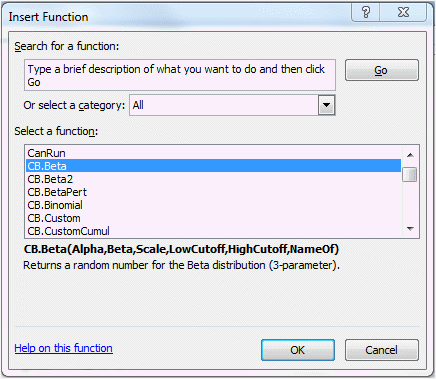For each of the Crystal Ball distributions, there is an equivalent Microsoft Excel function. You can enter these functions in the spreadsheet directly instead of defining distributions using the Define Assumption command. Be aware, though, that these functions have a number of limitations. For details, see Limitations of Probability Functions.
Also see Probability Functions and Random Seeds for information about setting a random seed so probability functions can have comparable values.
To view these functions and their parameters, select Formulas, and then Insert Function in Microsoft Excel, and then be sure the category is set to Crystal Ball (Figure 99, Crystal Ball Functions in Microsoft Excel, following).
Parameters and a brief description are displayed below the list of functions. The Cutoff parameters indicate truncation values, while NameOf is the assumption name. For parameter descriptions and details on each distribution, see the entry for that distribution earlier in this appendix.
